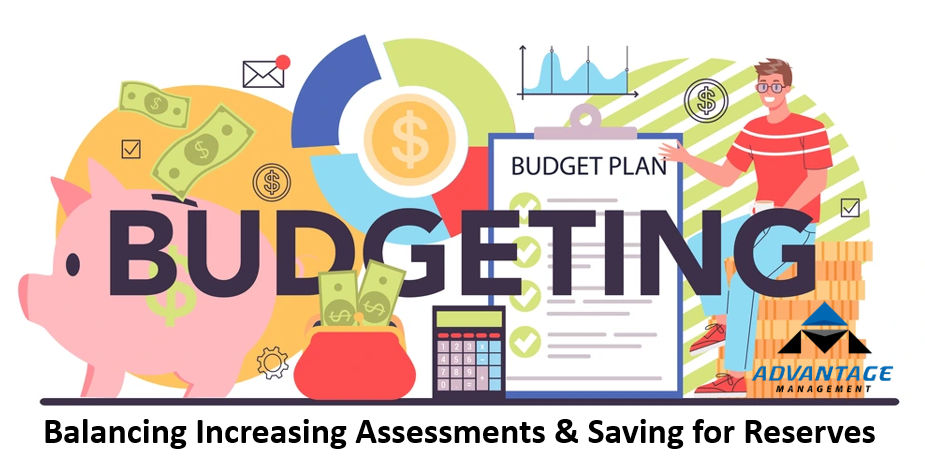As associations navigate the complex landscape of property management, two pressing issues often take center stage: the need to increase assessments and the necessity of building adequate reserve funds. Striking the right balance between these two priorities is essential for the long-term health and stability of the community.
Understanding Assessments
Assessments are fees collected from homeowners to cover the association’s operating expenses, maintenance, and planned improvements. These assessments are driven by the costs associated with running the association. While they are crucial for maintaining property standards, increasing assessments can lead to resident dissatisfaction. When boards approve budgets, they consider what it takes to operate the association and how much is needed to cover monthly expenses. Increases in assessments typically occur due to rising operational costs. While these costs are evaluated, there are times when increases become inevitable.
The Importance of Reserve Funds
Reserve funds are savings earmarked for future capital expenditures, such as roof replacements, plumbing updates, and other significant repairs or modernizations. Having a robust reserve fund is critical to avoiding sudden, large special assessments that can catch homeowners off guard. Reserve funds provide financial stability and peace of mind, ensuring that necessary projects can be fully or partially funded without placing undue pressure on residents.
Finding the Balance
- Transparent Communication: Open dialogue with residents about the reasons behind assessments and the need for reserve funds can foster understanding and cooperation. Regular updates on financial health and long-term planning can help homeowners feel more involved in decision-making. Financial updates are provided to all owners who attend open board meetings.
- Regular Financial Reviews: Conducting annual financial reviews can help associations identify areas where costs can be trimmed without sacrificing quality. This proactive approach allows for more predictable assessments and reduces the likelihood of unexpected expenses. Boards receive monthly financial statements for their review, and owners have access to year-end financial statements.
- Phased Increases: Instead of implementing a large assessment increase all at once, consider phased increases. This gradual approach can help residents adjust financially and make it easier for the association to build reserves steadily. It’s essential not only to keep up with inflation and increased operating costs but also to contribute to your reserve fund.
- Community Engagement: Encourage resident participation in meetings. When owners attend, they become more informed about the financial state of the association.
- Long-Term Planning: Developing a comprehensive long-term financial plan can help balance the need for immediate funds and future projects. This includes regular assessments of the property’s condition to anticipate necessary repairs and their associated costs. Review your reserve study and update it if it is not current.
Conclusion
Balancing increasing assessments with the need to save for reserves is a challenging yet essential task for associations. By prioritizing transparent communication, regular financial reviews, and community engagement, associations can navigate these financial waters effectively. Ultimately, a well-managed approach will enhance the financial stability of the association and foster a sense of community and trust among residents.


Recent Comments